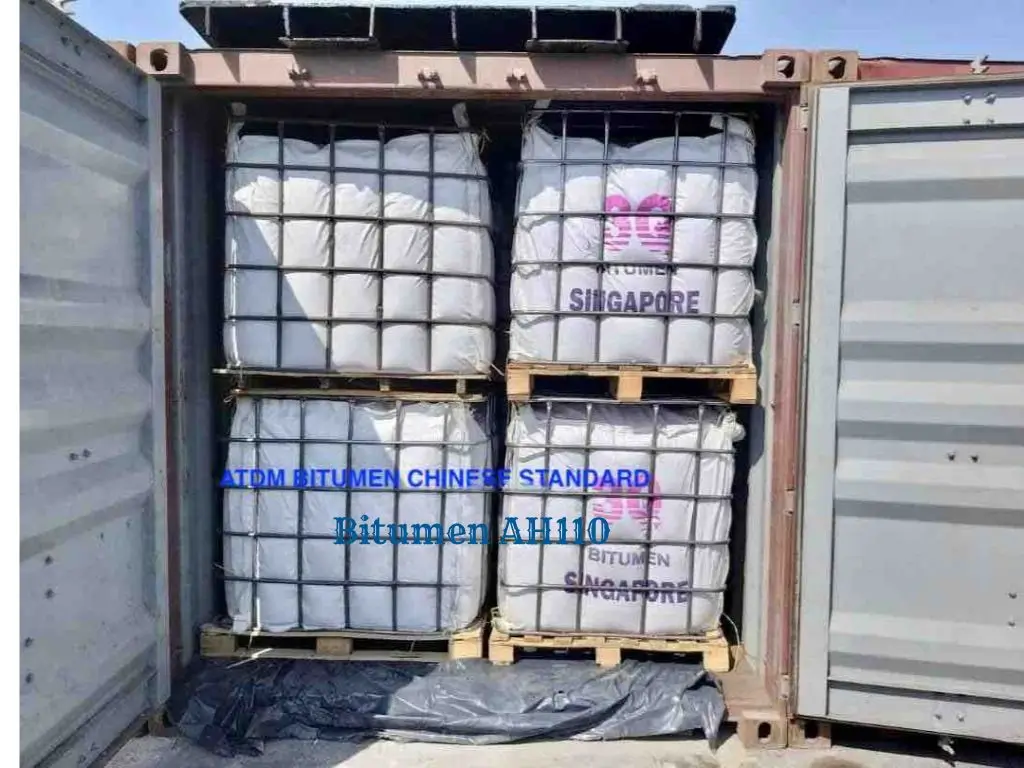
Meaning of Bitumen AH 110
Bitumen AH 110, a highly specialized grade obtained through the meticulous refining of crude oil, stands at the forefront of construction materials. The nomenclature “AH110” signifies its penetration grade, a measure of the depth in tenths of a millimeter that a standard needle penetrates the bitumen under specific conditions. With a finely tuned balance between viscosity and hardness, Bitumen AH 110 emerges as an exceptionally versatile and indispensable construction material.
Uses of bitumen AH110
Handling with care
Guardians of Quality: Packaging Bitumen AH110 for Optimal Performance
TDS of bitumen AH-110
| TDS of Bitumen AH-110 | |||
|---|---|---|---|
| SPECIFICATION | UNIT | VALUE | TEST METHOD |
| Penetration 25°C | 1/10 Millimeters (mm) | 80-110 | ASTM D5 |
| Softening Point | Degree Celsius (°C) | 45-52 | 45-52 |
| Density, 25°C | Kilogram per Cubic Meter (kg/m³) | 1.000 min | ASTM D71/D3289 |
| Ductility, 25°C, 5CM/MIN | Centimeters per Second (cm/s) | Min 100 | ASTM D113 |
| Flash Point | Degree Celsius (°C) | Min 225 | ASTM D6805 |
| Loss on Heating | Weight Percentage (WT%) | 0.5 Max | ASTM D6 |
| Ductility, 10°C, 5CM/MIN | Centimeters | Min 20 | ASTM D113 |
| Solubility in Trichloroethylene | Weight Percentage (WT%) | Min 99.5 | ASTM D 2042 |
| Penetration Index | – | -1.5/1.0 | – |
| AFTER TFOT AT 163 ˚C ASTM D1754 | |||
| LOSS Of WEIGH | Percentage (%) | 0.8 max | ASTM D1754 |
| RETAINED PENETRATION RATIO % | Percentage(%) | 50 min | ASTN D5 |
| Ductility, 25°C, 5CM/MIN | Centimeters | 100 min | ASTM D113 |
A: Bitumen AH110 is a premium penetration-grade binder designed for heavy-duty construction projects such as highways, airport runways, and industrial pavements. It provides excellent durability, adhesion, and resistance to deformation under high temperatures.
A: Bitumen AH110 is slightly harder and more viscous than AH90 or AH70, offering higher stiffness and superior performance in warmer climates or high-load areas while maintaining good flexibility.
A: It typically has a penetration range of 80–110 (0.1 mm) at 25 °C, a softening point between 45 °C and 52 °C, and a flash point above 225 °C, ensuring high temperature stability and strong bonding ability.